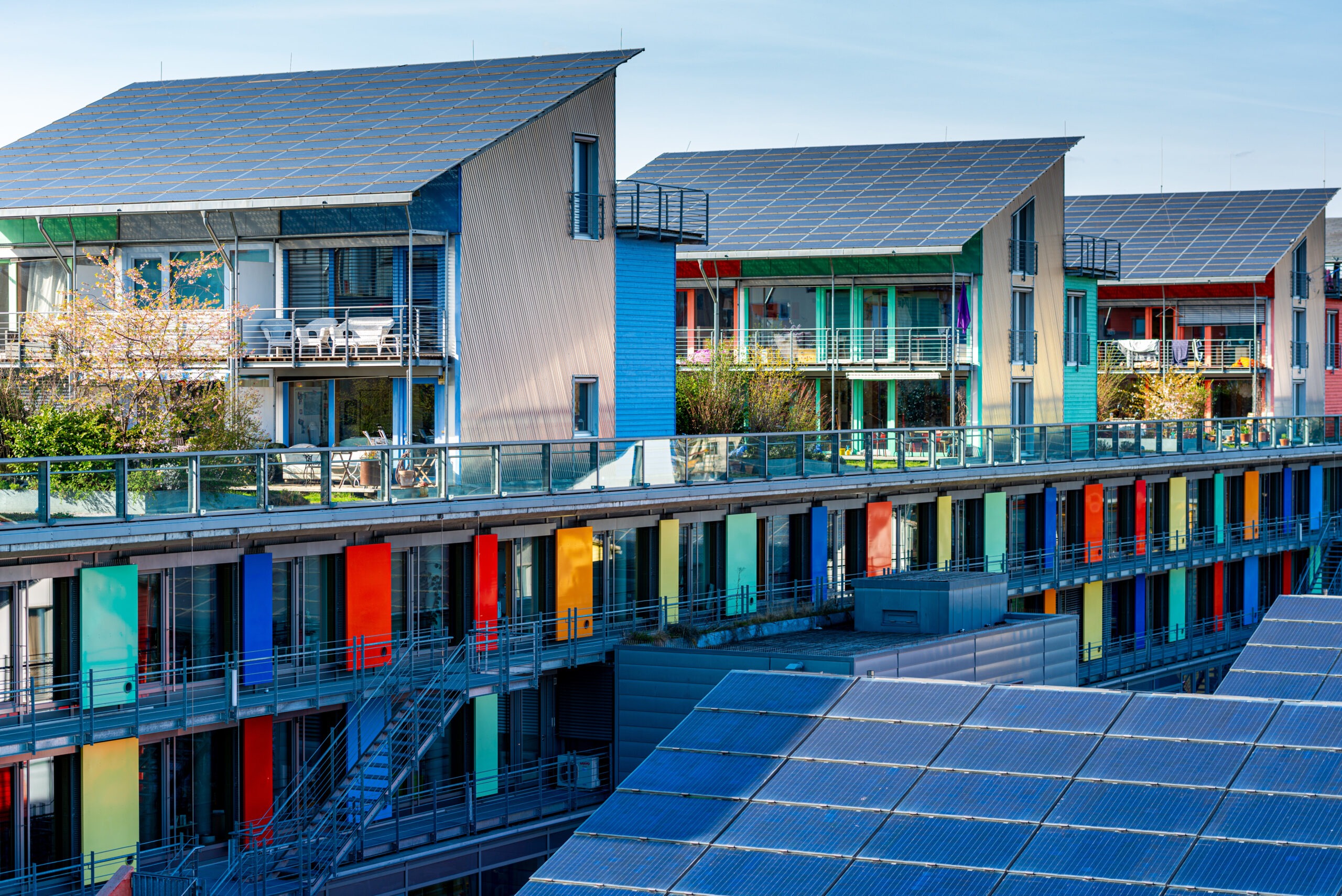

Despite the noise, real estate is off track for net zero. Yet, as Jeremy Oppenheim and Amy Paterson explain, neither cost nor complexity should be holding us back. The sector’s biggest-ever transformation is not only achievable, but the best strategy for an era of change.
We are entering a period of massive systemic change. No industry has built its house strong enough to withstand the consequences of the climate crisis, without a major transition.
But for the global economy, there are huge opportunities if we respond in time and get this transition right.
Electrifying 70% of the economy can supply the Global North and South with cheaper, abundant energy and free us from over-reliance on fossil fuels. New business and operating models are already moving us to a more efficient and circular economy. Restoring a healthy measure of ecosystem balance, by returning 1bn hectares of land to nature, can reduce the planetary costs of our land-use systems while opening up a $4.5 trn annual opportunity by 2030.
And, in an urban system where 85% of assets are zero-carbon by 2050, we can – as early as 2030 – unlock a $3.7tn annual opportunity and create the conditions for 170m new jobs.
Tipping points and systemic barriers
The scale-up of wind and solar energy has become the most prominent example of the ‘positive tipping point’ effect, triggering exponential growth in new technology. So what’s preventing that pace of systemic change in other industries? Why isn’t the future already here?
The reality is that technology is often too slow in coming down the cost curve, and requires supportive government policy and tailored capital to de-risk solutions, lower their costs and scale rapidly. In many areas, outdated or inadequate standards and weak carbon-data transparency still impair decision-making. And, in almost every sector, we see capital locked into high-carbon models: the instinct is still to under-price climate risk and to be complacent about stranded assets – in ways that will come back to haunt investors.

Rethinking the system
But change we must. The real estate sector represents 40% of global emissions and, as in other sectors, its systemic challenges must be faced together.
- Current policy signals – both the incentives, such as subsidies to scale green tech or grants for residential insulation, and the ‘sticks’ like mandatory carbon limits – are insufficient as policymakers struggle with limited building data and poor visibility on transition costs and benefits.
- Whole-life GHG emissions standards are proliferating, based on different assumptions, calculation methodologies and reporting frameworks. There is no ‘gold standard’.
- Market demand signals for low-carbon buildings from tenants (rent premiums) and lenders (green finance) are not enough in themselves to incentivize widespread decarbonisation.
- The technologies for fully decarbonizing buildings are either at an early stage – green steel, carbon-cured concrete – or are further ahead, but still need costs to fall.
- And, in such a fragmented space, the value-creation power of net zero is difficult to demonstrate. Conversely, lenders and asset owners are not yet incorporating transition and physical risk into their evaluations.
Realising the opportunities, then, means reimagining buildings in economic terms. Can we rethink real estate as a ‘multi–value sector’? To what extent should we view buildings as part of the energy system? Some new value streams are already here, in the form of grid-integrated buildings: flexible and highly efficient assets with solar and storage generating value from grid services, demand response, and energy price arbitrage.
More profit pools are likely to emerge, such as monetizing the value of buildings as carbon sinks, based on the carbon stored in the biomaterials used in their construction. We have only begun to develop the potential of modular construction, or of software to support material-efficient design, recycling of materials and ‘circular’ buildings’.
The complexity myth
If this seems over-optimistic, think again. The idea that real estate is more fragmented or complicated than others simply doesn’t stand up.
In the past five years, the Energy Transitions Commission and Mission Possible Partnership have, essentially, shifted the ‘belief regime’ of key energy and industry players around the feasibility of net zero for hard-to-abate sectors, through technical net zero roadmaps and demand aggregation for green products. In the financial sector, consider the role of GFANZ in creating recognition that all investments must take carbon into account, and how this is influencing investment decision-making.
Or consider the progress in such an intensely competitive industry as fashion. The Fashion Pact has enabled 12 major companies to create the first collective agreement to purchase renewable energy for next 10 to 15 years.
The truth is that barriers to change are often over-stated – sometimes through lack of information, sometimes for less benign reasons. But to overcome the real barriers, there is evidence that collaboration, not competition, drives successful transitions, with a combination of strong policy signals, market demand, rapid technology change, enlightened capital, and common standards.
Some hotspots of collective action already exist in the real estate sector, for example, the IIGCC, ULI’s Greenprint Investor Community, and C-Change initiative, the Better Buildings Partnership, WGBC’s Advancing Net Zero programme, INREV, ANREV, and WBCSD’s Market Transformation work, alongside others. There are also some “swarm efforts”, like LOTUF: a timebound, investor led project to cut through the complicated space of net zero targets, standards and pathways in real estate to build clarity on what ambitious action looks like and how to ensure it is recognized and rewarded.
It is these first movers that are likely to see the greatest benefits from capturing transition value. In the United States, property giant JLL projects a demand for 29 million square metres of low-carbon office space – a tight squeeze into the 2.1 million currently available.
A final thought: in two years’ time, COP30 will be convened in Belém, Brazil. How can the host city be supported to build hotels in preparation for the events – rapidly, and in a zero-carbon, nature-positive, modular fashion? How will they be best used to provide affordable housing once the event is over? The industry should not miss this opportunity to show its knowledge, shared capability, and commitment to a profound and achievable transformation.
Jeremy Oppenheim is the Founder and Senior Partner of Systemiq. Amy Paterson is a Director of Sustainable Finance at Systemiq.


